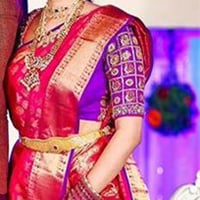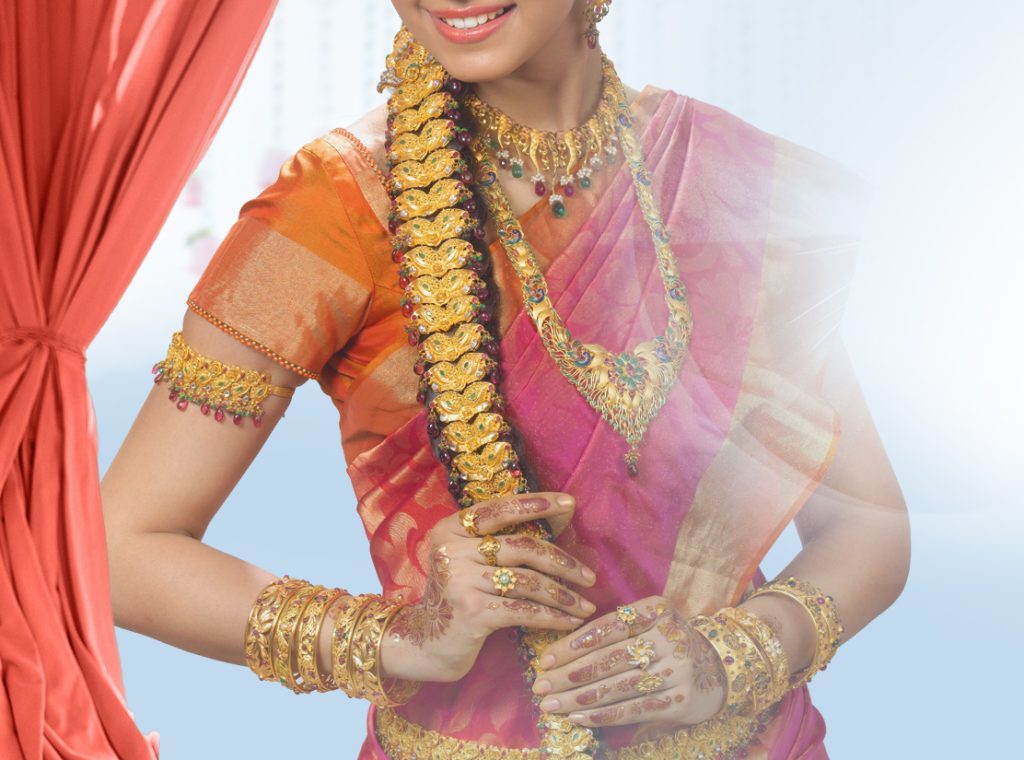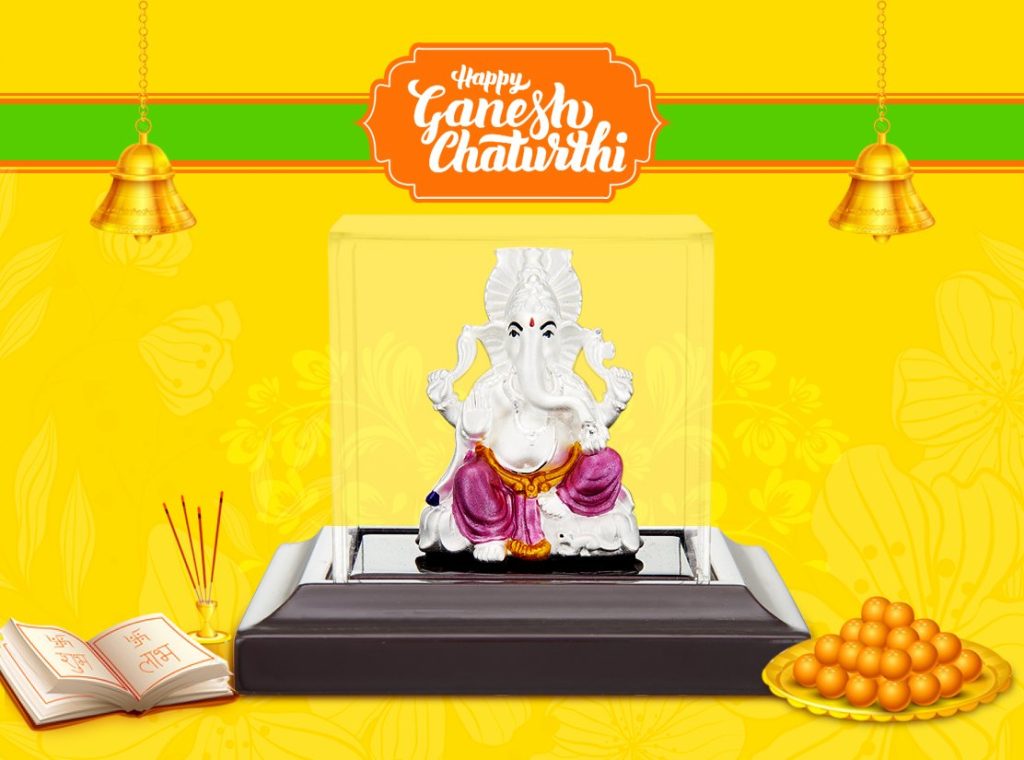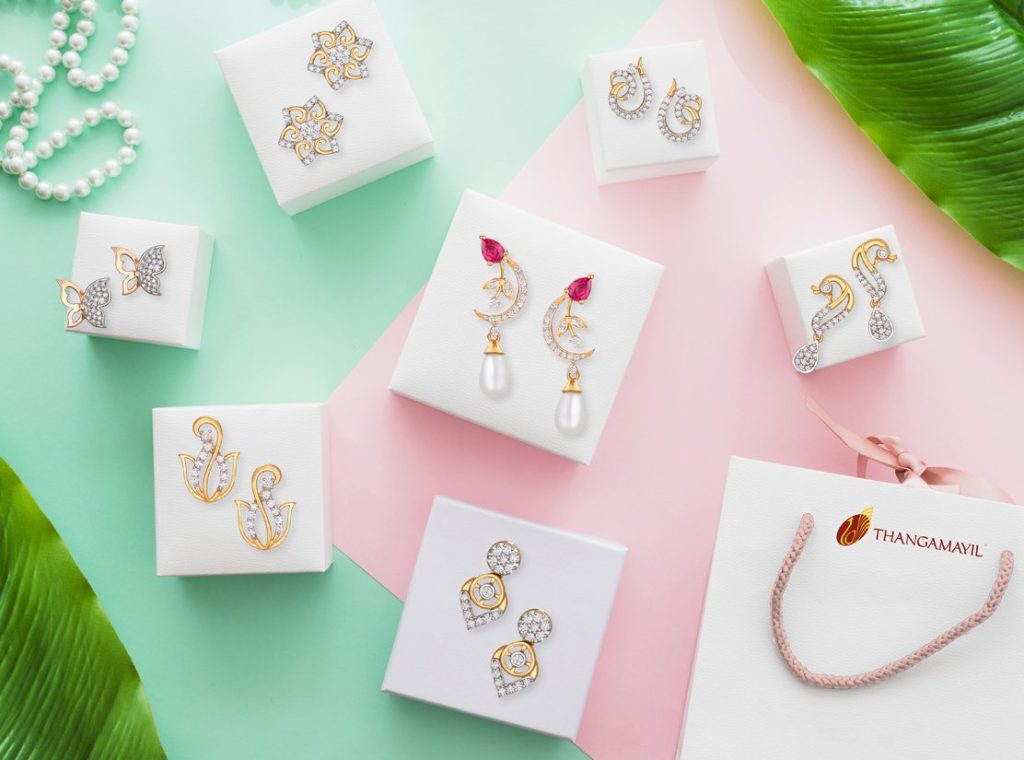Indians love their gold – and nowhere is this love displayed with more fervour than at Indian weddings – more so at south Indian weddings.
Compared to their northern counterparts, south Indian weddings are subdued in terms of pomp and show. However, one look at a south Indian bride and you will know they take their weddings seriously! A south Indian bride is decked out in the finest of silks and the most ornate jewellery, making her look a royal princess. Not only that, while the wedding festivities may not seem like a grandiose spectacle, they are every bit a rich and classy affair – what with all the women donning their best, heaviest, most vibrant Kancheepuram silk sarees and traditional pure gold jewellery. And while the jewellery of every south Indian state has its own charm, the Tamil Brahmin bride has today become synonymous with the ‘south Indian bride’. So let’s take a closer look into the Tamil Brahmin bride’s jewellery box.

The wedding jewellery of a Tamil Brahmin bride bears a close resemblance to the traditional ‘temple jewellery’ worn by Bharatnatyam dancers. Whereas Rajasthani brides can’t do without their kundan or polki or meenakari, the Tamil bride’s jewellery is as colourful as her saree, consisting of rubies, emeralds and pearls set in intricate gold work. The Tamil bride also has the distinction for being the most ornately decked out – from the unique hair ornaments, to exquisite necklaces, she has the pick of the best for her special day!
Tamil Brahmin Bridal Head Ornaments
The hair jewellery worn by the Tamil bride is the most unique, and what sets her apart from other brides. The Nethi Chutti, the Suryapirai and the Chandrapirai are distinctive Tamil bridal pieces, made out of pure gold, round-cut rubies, emeralds and pearls. Traditionally, the Nethi Chutti adorns the middle parting of hair as well the hair line on the forehead, and the Chandra and Surya are worn on either side of the parting. However, if the bride wants to don a more contemporary look, she may opt for a single-chain Nethi Chutti that simply sits on the parting and forego the Surya and Chandra altogether. Cosmopolitan Tamil brides are now even choosing minimalistic pendant Nethi Chutti or the north Indian inspired kundan Nethi Chutti for their receptions. However, for the wedding rituals, nothing pairs as beautifully with a rich silk saree as the traditional Kemp Nethi Chutti with the Surya and Chandra.

Famous Indian actress, sporting a variety of Nethi Chutti in traditional bridal attire
That’s not all though. A full-fledged traditional Tamil bridal look is incomplete without the Jadanagam – an ornate serpent-like chain made of gold and gemstones that adorns the bride’s braid from top to bottom; a Rakkadi or a brooch that decorates and also holds together the hair bun, and the Kunjam – a hair-piece consisting of three soft ornamented black cloth balls tied to the end of the braid for the final finishing touch.

Bride adorned with Jadaganam made of gold & gemstones, accented with real and artificial flowers
Tamil Bridal Ornaments for the Face and Neck
As any other bride, the Tamil bride has a variety of jewellery that she can use to decorate her ears, nose and neck.
If going for a full traditional look, the Jhimki Mattel are her first choice when it comes to earrings. Made of the same red and green gemstones and pearls, they adorn the entire pinna ending in a bell shaped ornament that hangs from the ear lobe. It pairs beautifully with the traditional Nethi Chutti and gives an adorable look to the bride’s face. To pair with this, brides will wear the Mookuthi – a simple nose stud or pin, generally set with a single gemstone; the Besari which is a small nose ring consisting of eight stones and the Bullaku, another nose ring that hangs over the cupid’s bow. However, if the bride wants a more sober look – she may just wear the Mookuthi.
For her neck the bride has no dearth of haarams or malais to choose from. Every Tamil bride wears the thali, of course, as part of the rituals that signify her being married. Other than that, Tamil bridal jewellery has some very unique necklaces that resemble the rich culture, bounty and beauty of south India. The kaasu maala, a chain made of gold coins; the maanga maala, a chain consisting of small paisley or mango shaped motifs or the kodi maala – each of the bride’s neck pieces tells an interesting story. The bride is free to wear all or any of these. To these she may also add a single or layered gold chain or an addigai which is similar to a pendant. All of these necklaces are crafted in the brightest yellow gold and some are studded with emeralds and rubies. The necklaces are arranged beautifully, one below the other so as to cover the bride’s entire décolletage, giving her a rich and royal look.

The Tamil bride’s Arms and Hands:
The vanki (armband), valayal (bangles) and the neli (ring) make up most of the jewellery for the bride’s arms and hands. The vanki may at times be serpent-shaped, in which case it is called a Nagothu. The bangles may be studded with gemstones or in plain gold, called as Kappu. It is entirely upto the bride how many bangles she chooses to wear. Some brides often skip wearing the vanki – only choosing to wear an array of different bangles. These days brides also mix and match gold and coloured bangles to complement the colours of their wedding saree. When it comes to the neli – the bride may adorn traditional ornate rings studded with rubies or corals or emeralds; or she may opt for more contemporary, delicate designs that she can wear on a daily basis later on.
The final touch – waistband & anklets:
No bride will want to forego the traditional oddiyanam – a beautiful waist belt tied around the saree. Traditionally crafted in pure gold, the oddiyanam is crafted with motifs of Goddess Lakshmi, or flowers and leaves, often accentuated by delicate golden dangling chains. The oddiyanam adds definition to the bride’s silhouette and brings the entire look together.
And of course, last but not the least – every Tamil bride loves to don the traditional silver anklets – called silambu and silangai; along with the toe ring, called minji. The wearing of the minji is an important ritual in the ceremony. The groom places the minji on the bride’s second toe, to signify commitment. Like the anklets, the toe ring is also made of silver.

Finally, with all her jewellery in place, and her silk saree draped to perfection, The tamil Brahmin bride is finally ready for her big day – looking every bit a resplendent, demure beauty – right out of a mythology book!


